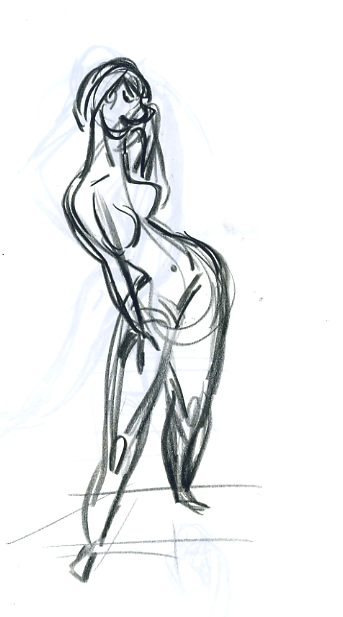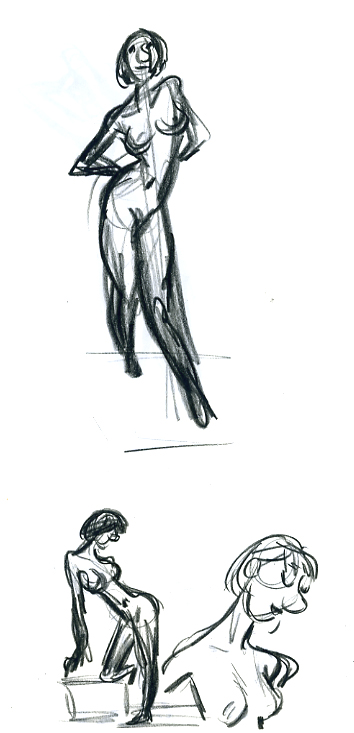Class with Tom Gately is a weekly highlight — above all else, it's fun! But it's also challenging: he makes you push yourself. Tom's instruction tends to center on representations of weight, force, clarity, and performance, concepts which aren't always easy to internalize or track. But this is why we show up week after week! We want to get our hours in and learn from Tom's best practices.
To start with, one begins by asking who the character is and what they are doing. How do they feel? Where are they placing their weight? Does the overall image have a focal point? Is there perspective that could be used more effectively? Proportions that could be pushed? Angles? Shapes? Opposing forces? Tensions that could be emphasized? In so many words, how can we use the model to guide us towards a figure drawing?



In other classes, attention to form and structure has meant planes and anatomy, attention to character is limited to costumes and props, and attention to caricature has only meant distortion.
At Pixar, what Tom asks is that we take what's in front of us as a springboard for performance. Performance is the thing. When we have this in mind, the model's pose becomes something to progress from and each of our drawing choices becomes an opportunity to tell a part of a story. In short, we begin to draw from life by taking a point of view. And then? We have fun and we push it!
These are old links, but here are some incredible sketches from my colleagues and friends:
James Robertson
Louis Gonzales
Alex Woo
Rob Thompson
Enrico Casarosa
Adrian Molina








